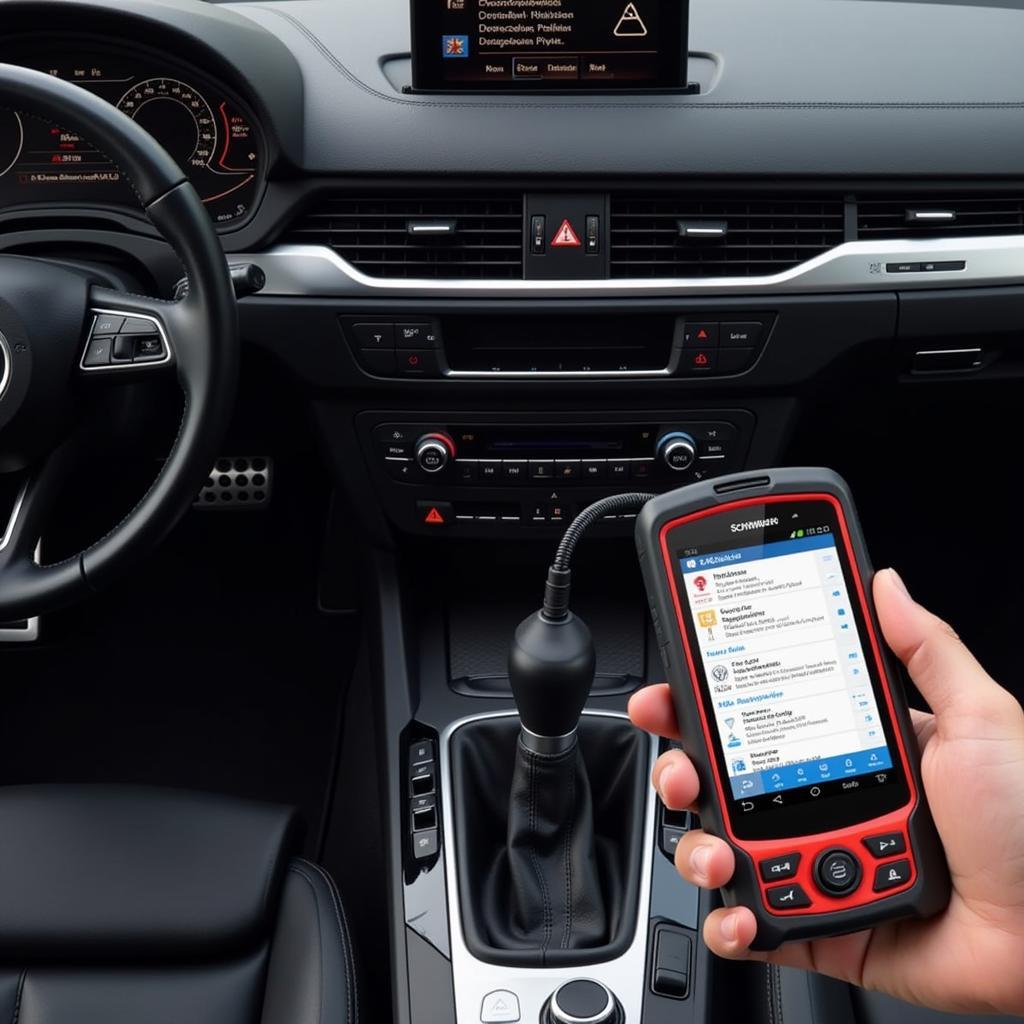Understanding your vehicle’s transmission temperature is crucial for its longevity and performance. An EDS scan tool provides vital insights into this critical aspect, allowing you to diagnose potential issues early on and prevent costly repairs. This guide will delve into the importance of monitoring transmission temperature with an EDS scan tool, common problems, troubleshooting techniques, and best practices.
If you are looking for reliable scan tools, you might find the best obdii car diagnostic scanner helpful.
Why is Monitoring Transmission Temperature Important?
Excessive heat is the number one enemy of automatic transmissions. Overheating can lead to fluid breakdown, damage to internal components like clutches and seals, and ultimately, transmission failure. Regularly monitoring the transmission temperature allows you to identify potential problems before they escalate, saving you time and money in the long run. An EDS scan tool provides real-time temperature readings, allowing for precise diagnosis and informed maintenance decisions.
How Does an EDS Scan Tool Measure Transmission Temperature?
An EDS scan tool, or Electronic Diagnostic System scan tool, communicates with your vehicle’s onboard computer (ECU) to retrieve various data points, including transmission temperature. The temperature sensor, typically located within the transmission, sends signals to the ECU, which the scan tool then accesses and displays. This provides a direct and accurate reading of the fluid temperature inside the transmission.
Common Causes of High Transmission Temperature
Several factors can contribute to high transmission temperature. These include:
- Low Fluid Level: Insufficient fluid reduces the system’s ability to dissipate heat effectively.
- Dirty or Degraded Fluid: Old or contaminated fluid loses its ability to lubricate and cool the transmission.
- Towing Heavy Loads: Pulling heavy trailers or loads puts extra strain on the transmission, generating more heat.
- Driving in Extreme Conditions: Stop-and-go traffic, mountainous terrain, and hot weather can all increase transmission temperature.
- Faulty Transmission Cooler: A malfunctioning transmission cooler can prevent proper heat dissipation.
- Slipping Transmission: A slipping transmission generates excessive friction and heat.
Troubleshooting Transmission Temperature Issues with an EDS Scan Tool
An EDS scan tool can be invaluable in diagnosing transmission temperature issues. Here’s how:
- Connect the scan tool: Plug the scan tool into your vehicle’s OBD-II port.
- Select the transmission temperature parameter: Navigate through the scan tool’s menu to access live data and select the transmission temperature reading.
- Monitor the temperature: Observe the temperature reading while driving under various conditions.
- Compare the readings: Check if the temperature falls within the manufacturer’s recommended range.
- Check for error codes: The scan tool can also retrieve diagnostic trouble codes (DTCs) related to the transmission.
For more information on using specific scan tools, check out resources like the [craftsman 1655 scan tool](https://scantoolus.com/craftsman-1655-scan tool/) guide.
Best Practices for Maintaining Optimal Transmission Temperature
- Regular Fluid Changes: Follow the manufacturer’s recommended fluid change intervals.
- Use the Correct Fluid Type: Ensure you use the fluid specifically recommended for your transmission.
- Install an Auxiliary Transmission Cooler: Consider adding an auxiliary cooler for heavy towing or driving in extreme conditions.
- Check for Leaks: Regularly inspect for fluid leaks and address them promptly.
- Avoid Aggressive Driving: Smooth acceleration and deceleration can help reduce stress on the transmission.
“Regular maintenance and monitoring with an EDS scan tool are key to preventing transmission problems,” says John Miller, a seasoned automotive technician with over 20 years of experience. “Early detection can save you from expensive repairs down the road.”
Conclusion
Monitoring your transmission temperature with an EDS scan tool is an essential part of preventative vehicle maintenance. By understanding the causes of high transmission temperature and utilizing the diagnostic capabilities of a scan tool, you can proactively address potential problems and extend the life of your transmission. Don’t wait until it’s too late. Invest in an EDS scan tool and keep your transmission running cool and efficiently. For any assistance or further inquiries, please feel free to contact us at ScanToolUS at +1 (641) 206-8880 or visit our office at 1615 S Laramie Ave, Cicero, IL 60804, USA. You can also learn about vgate obd scan tool software for enhanced diagnostic options.
FAQs
-
What is a normal transmission temperature range? Generally, 175-220°F is considered a normal operating temperature range. However, consult your vehicle’s owner’s manual for specific recommendations.
-
Can I use any OBD-II scan tool to monitor transmission temperature? Not all OBD-II scan tools have the capability to read transmission temperature. Ensure your scan tool explicitly supports this function. Explore options like the sae j1939 scan tool for specialized applications.
-
What should I do if my transmission temperature is too high? If your transmission temperature exceeds the recommended range, stop driving immediately and allow it to cool down. Then, diagnose the issue using an EDS scan tool or consult a qualified mechanic.
-
How often should I check my transmission fluid level? It’s a good practice to check your transmission fluid level at least once a month.
-
How can I prevent my transmission from overheating? Regular fluid changes, using the correct fluid type, installing an auxiliary cooler, and avoiding aggressive driving can all help prevent overheating.
-
Is it expensive to replace a transmission? Transmission replacement can be a costly repair, often ranging from several hundred to several thousand dollars.
-
Can an EDS scan tool tell me exactly what’s wrong with my transmission? An EDS scan tool can provide valuable diagnostic information, including temperature readings and error codes, which can help pinpoint the source of the problem. However, it may not always provide a definitive diagnosis. Consulting a qualified mechanic is always recommended for complex transmission issues.


